Christoph Mügge has been a grant holder of the TYPA Residency for Nordic and Baltic Artists for a three months period. Throughout his residency, Mügge delved into diverse artistic techniques to scrutinize the fragility and significance of life, unravelling the evolution of communication across epochs, the deceptive recollection of places, and the dissemination of misinformation about historical figures. His artistic expression merges the contemporary digital age with vintage technologies spanning different eras. Mügge’s creations resonate with timeless expressions and incorporate traditional printmaking techniques, resulting in a fusion of past and present. We asked Christoph few questions.
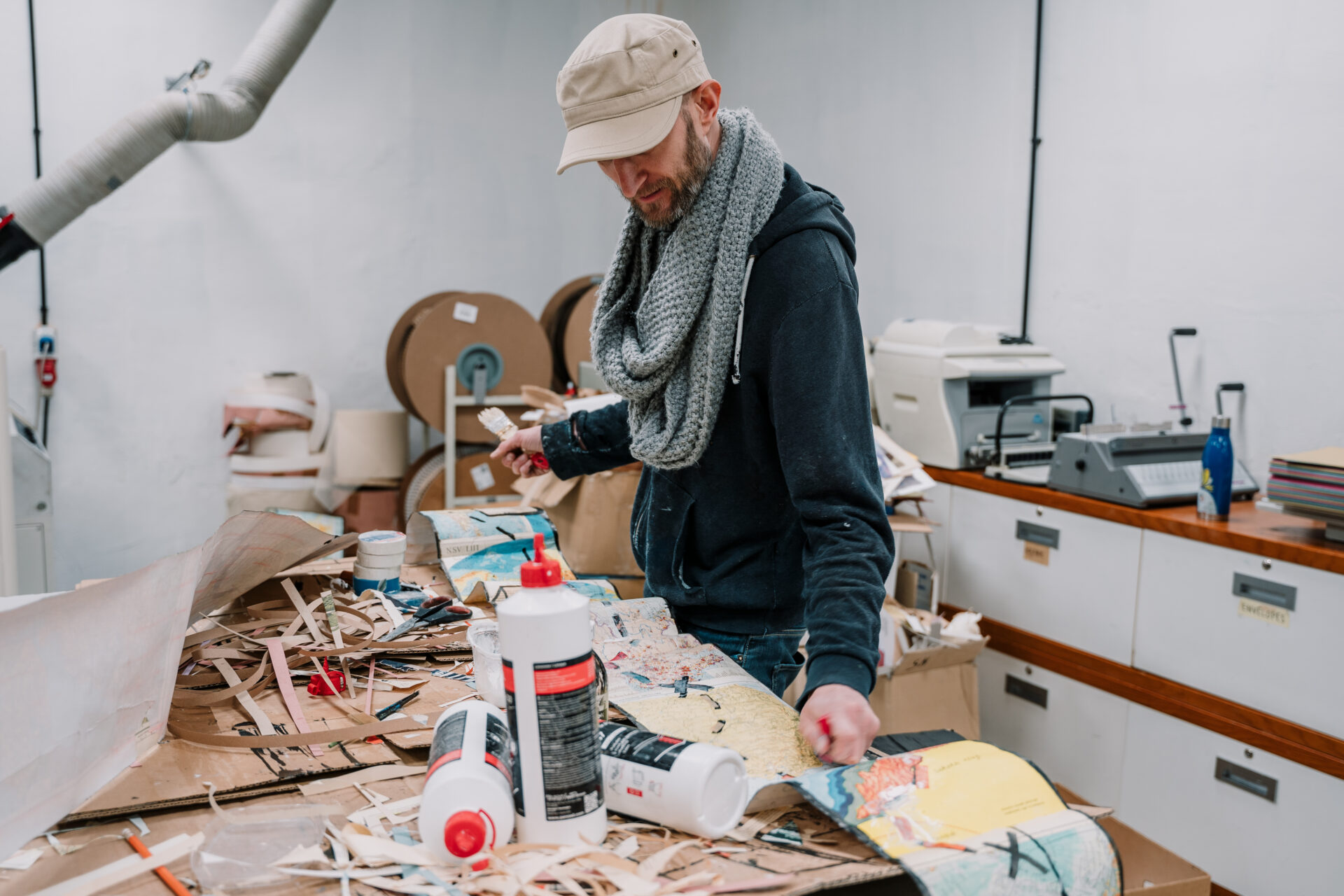
What drew you to merge the contemporary digital age with vintage technologies in your artistic expression?
My recent work deals with all the traces that are left behind after a human passes away, including obsolete storage media, as well as digital data of such an abundance that it becomes an almost impossible task to scour it for relevant information, and to decide which files to save and which to delete.
During my residency I worked on the cyanotype series “Last Messaging” centred around the last words of anonymous individuals before their demise. Nine individual works show imaginary computers and other devices that are hybrids of technology of various eras, and have never exited in this way, all in the style of fragile Delft blue porcelain. The fusion of disparate time periods serves as a means to evoke a timeless sense of nostalgia. Much like the complexity of emotions and thoughts that accompany individuals in their final moments, some aspects remain strikingly clear, while others appear blurred or fractured—a reflection of the intricate nature of the human experience itself. The “Last Messaging” series aims to capture these poignant expressions, encapsulating the spectrum of human emotions as individuals navigate the threshold between life and eternity.
Aesthetically I wanted to merge the analogue with the digital and create a juxtaposition between the old and the new, exploring themes of nostalgia, progress, and the rapid advancement of technology. This was achieved by letting an AI image generator make pictures that were later executed in one of the oldest photographic techniques, dating back to 1842. Applying the chemicals with a brush that brought forth irregular frames and a handmade, painterly quality further helped contrasting the AI aesthetic that often can have a rather soulless feeling.
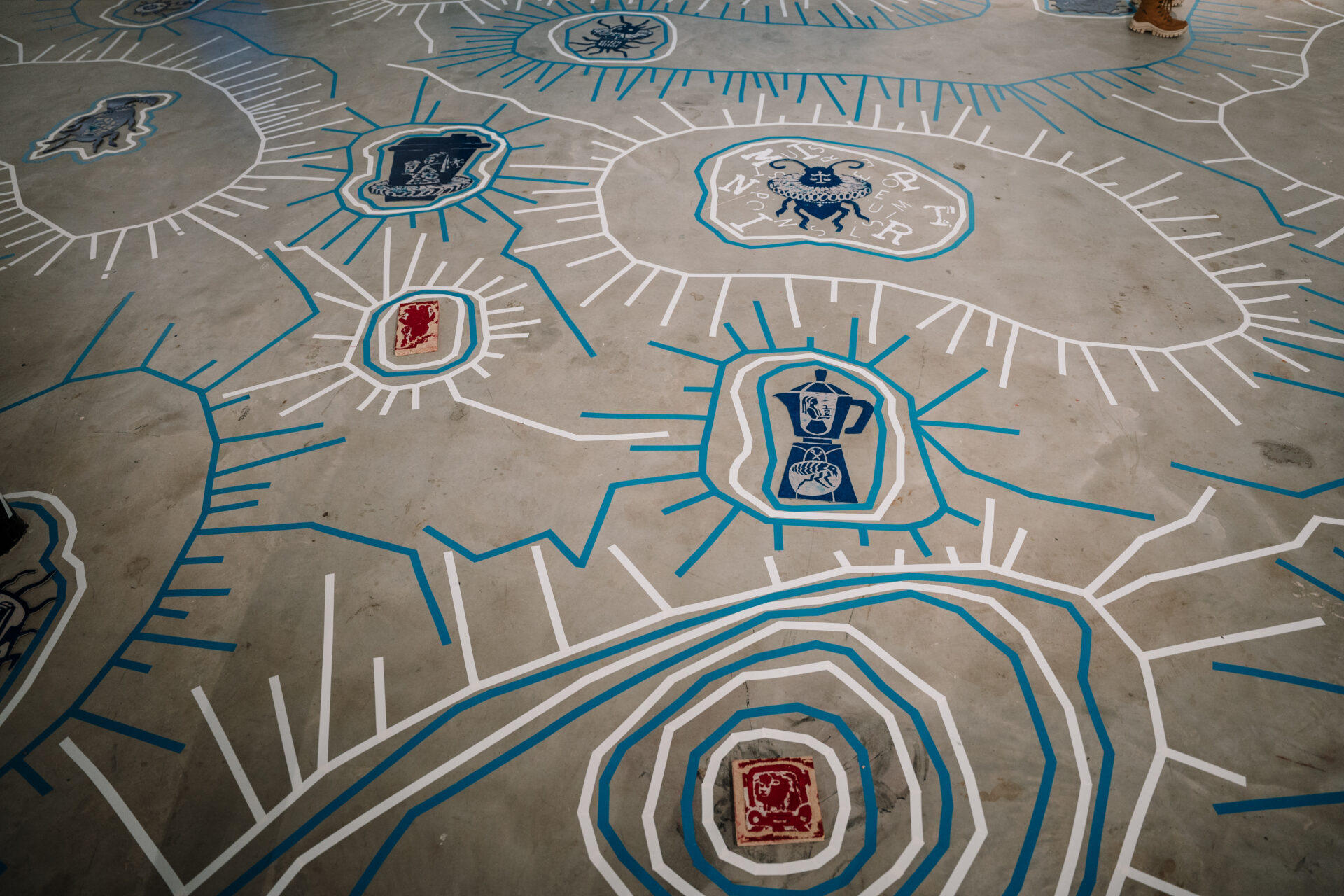
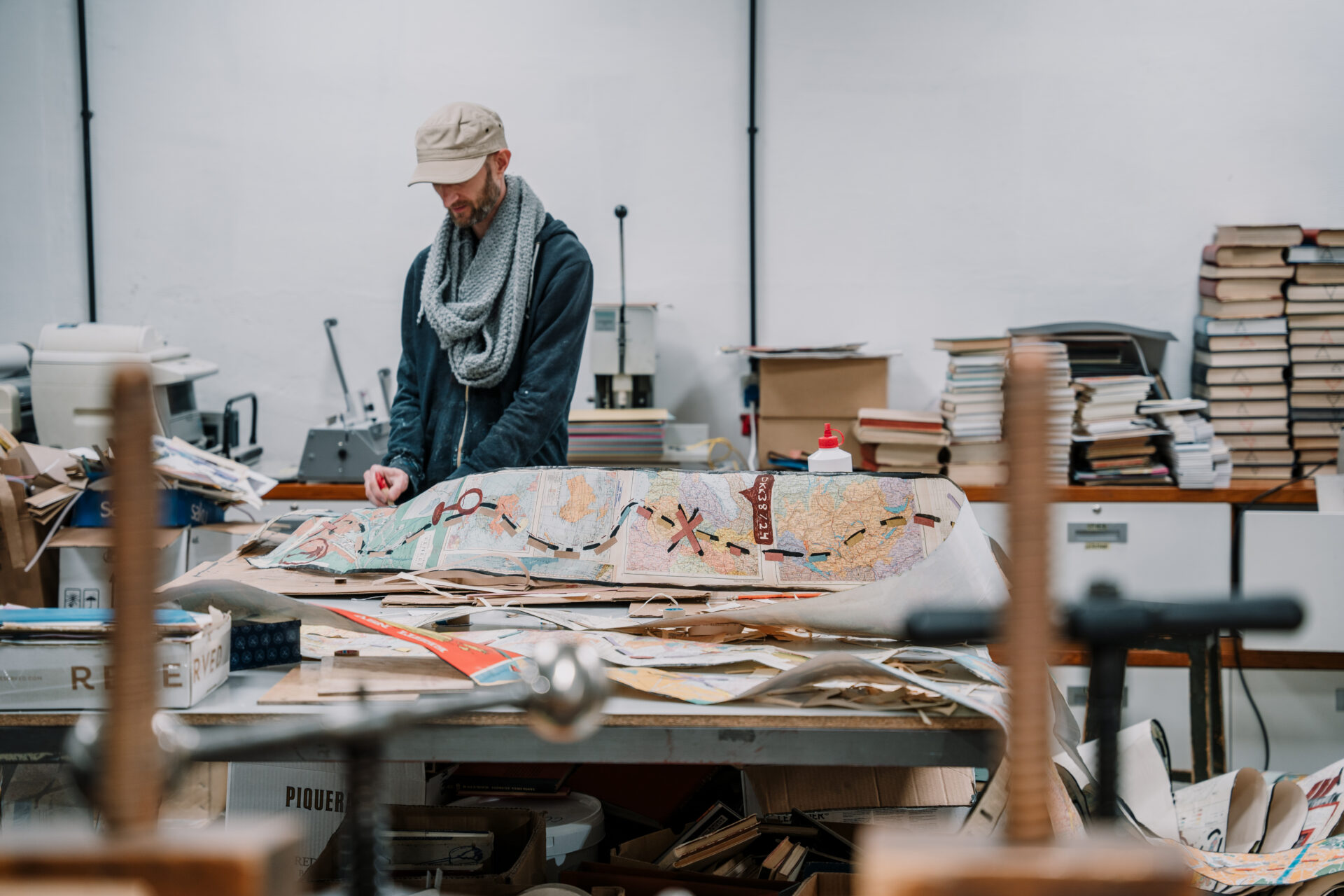
How do you perceive the role of art in capturing and interpreting changes in communication over time?
I believe that art serves as a powerful lens through which changes in communication over time are captured and interpreted. As a reflection of societal evolution, artistic expressions can encapsulate the nuances of communication dynamics. Whether through the depiction of historical events, the exploration of cultural shifts, or the utilization of innovative mediums, art becomes a mirror that not only captures the evolving nature of communication but also interprets the subtle layers of meaning and connection that characterize human interaction across different eras. It acts as a bridge between the past and present, enabling us to get insights into the intricate tapestry of communication evolution, making the intangible aspects of human connection tangible.
Did your experiences in Tartu influence your artistic perspective and the themes you chose to address in your exhibition?
During my time in Tartu, I dedicated myself to further exploring themes that had captivated my interest for quite some time. This period allowed me to meticulously prepare for multiple upcoming exhibitions scheduled for 2024. The invaluable combination of time, space, and access to specialized equipment, along with a generous production budget, facilitated the creation of works that would have been unattainable in my usual environment. Residing in a different city for a three-month span undeniably left a profound and lasting imprint on both my personal experience and my artistic direction. The unique environment of Tartu provided me with the inspiration and resources to delve into uncharted creative territories. My stay was exceptionally productive, culminating in my solo exhibition at Typa Gallery. It is worth noting that the showcase only presented a selection of the works produced during my residency.
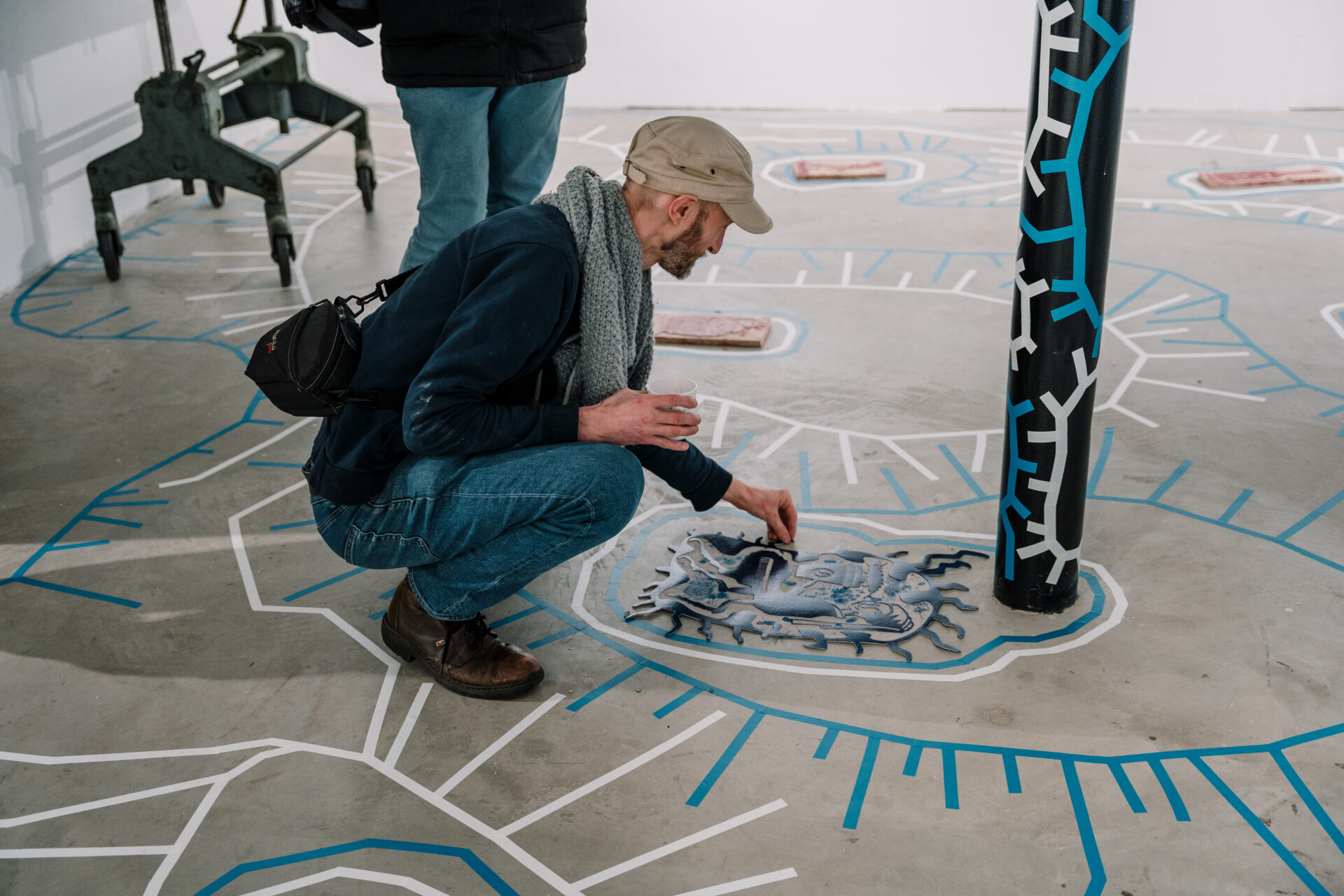
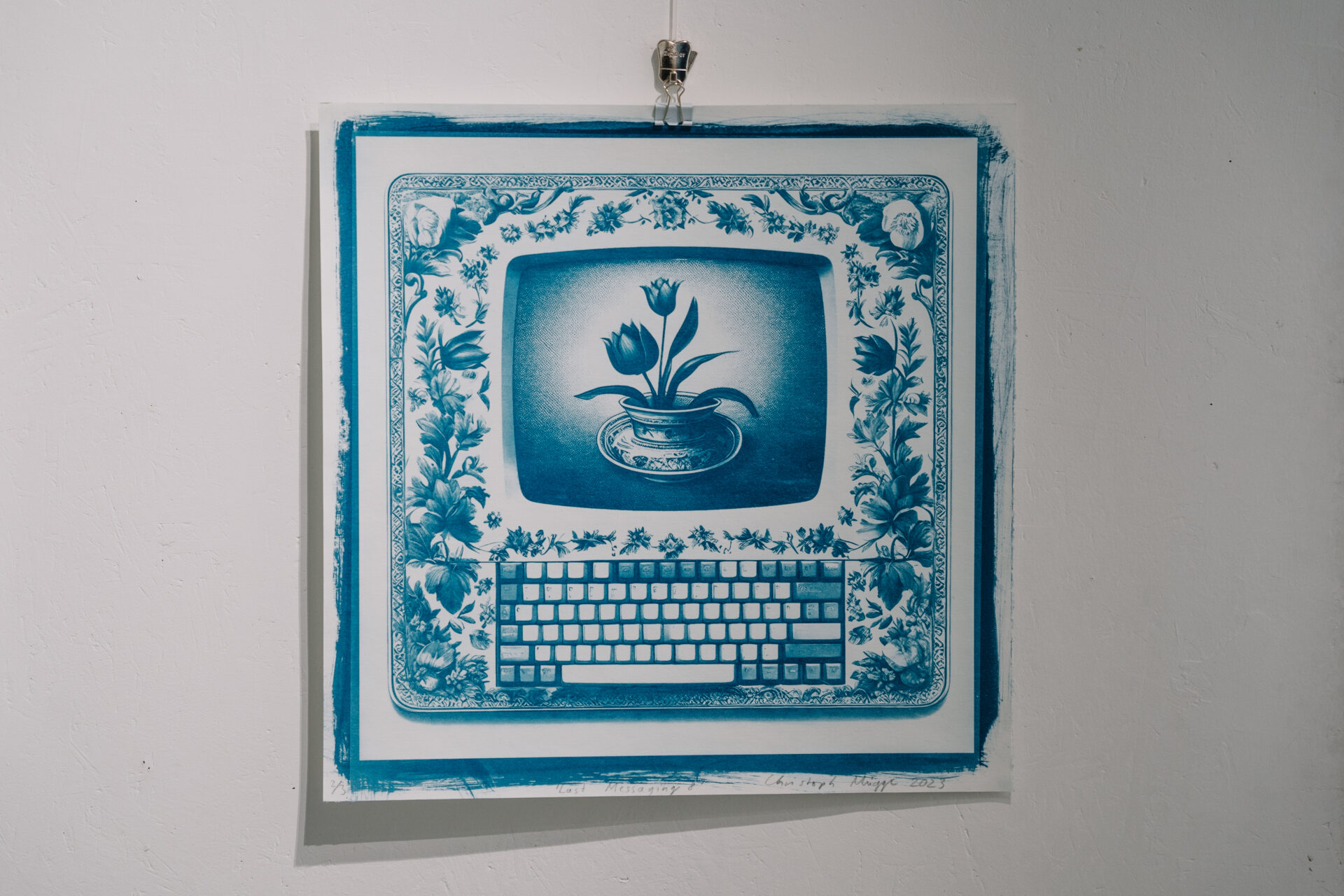
Were there any unexpected challenges or discoveries during your residency that affected your creative process?
I am genuinely pleased with the outcomes of my residency, even though time seemed to slip away all too quickly. One of my aspirations was to delve into an experimental project involving a letterpress, a goal that unfortunately remained on my to-do list. While a significant portion of my residency was dedicated to linocuts, which proved to be time-consuming, regrettably, I couldn’t find the time to explore typography.
One of the most remarkable discoveries during my residency was the wealth of vintage books, magazines, and maps from various countries and in various languages donated to TYPA. It proved to be a treasure trove, and I seized the opportunity to create collages on wallpaper using some of this material. These works will be featured in my upcoming exhibition, “Lost Library Legends” (together with my brother Sebastian Mügge) at the Round Tower in Copenhagen in the summer of 2024.
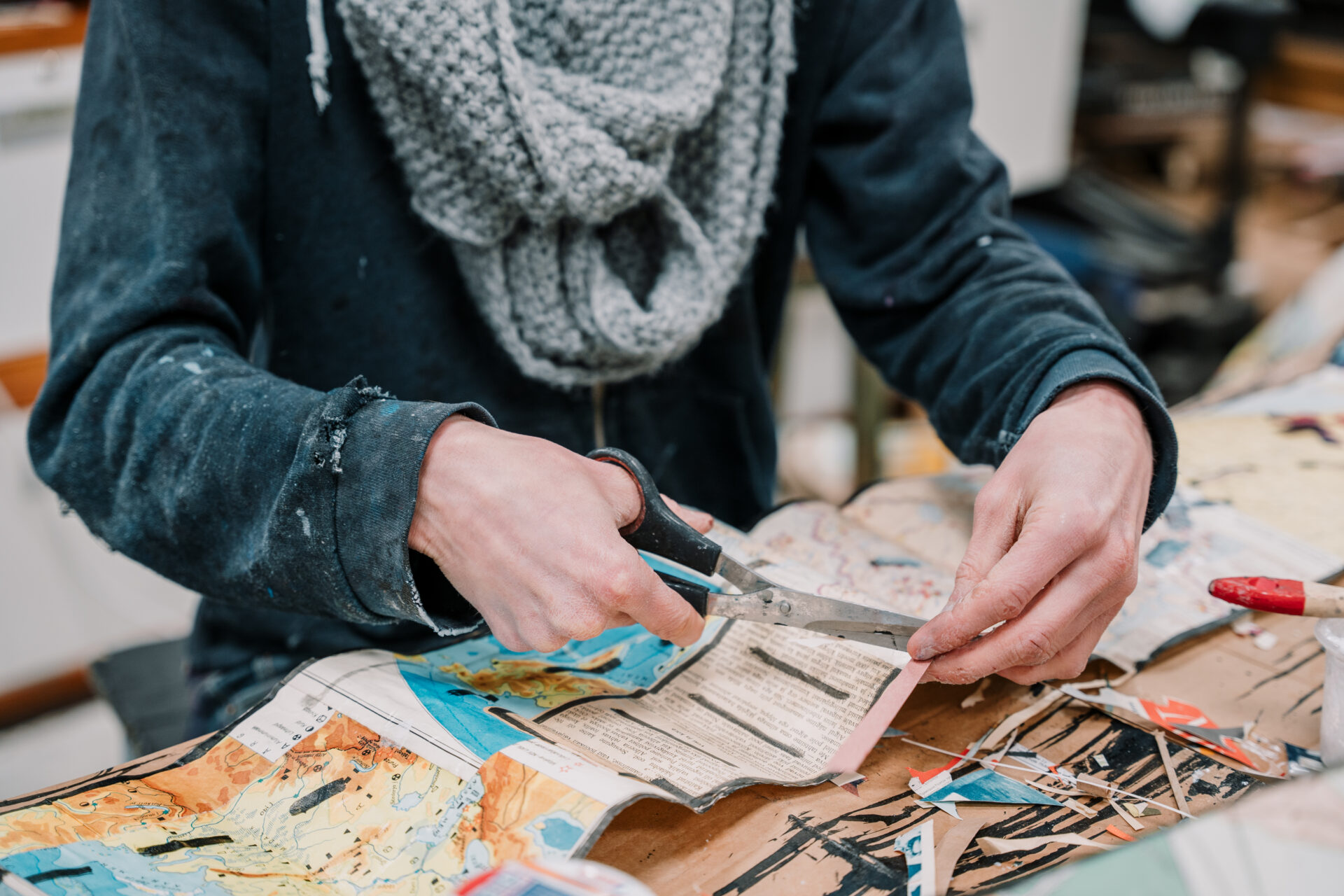
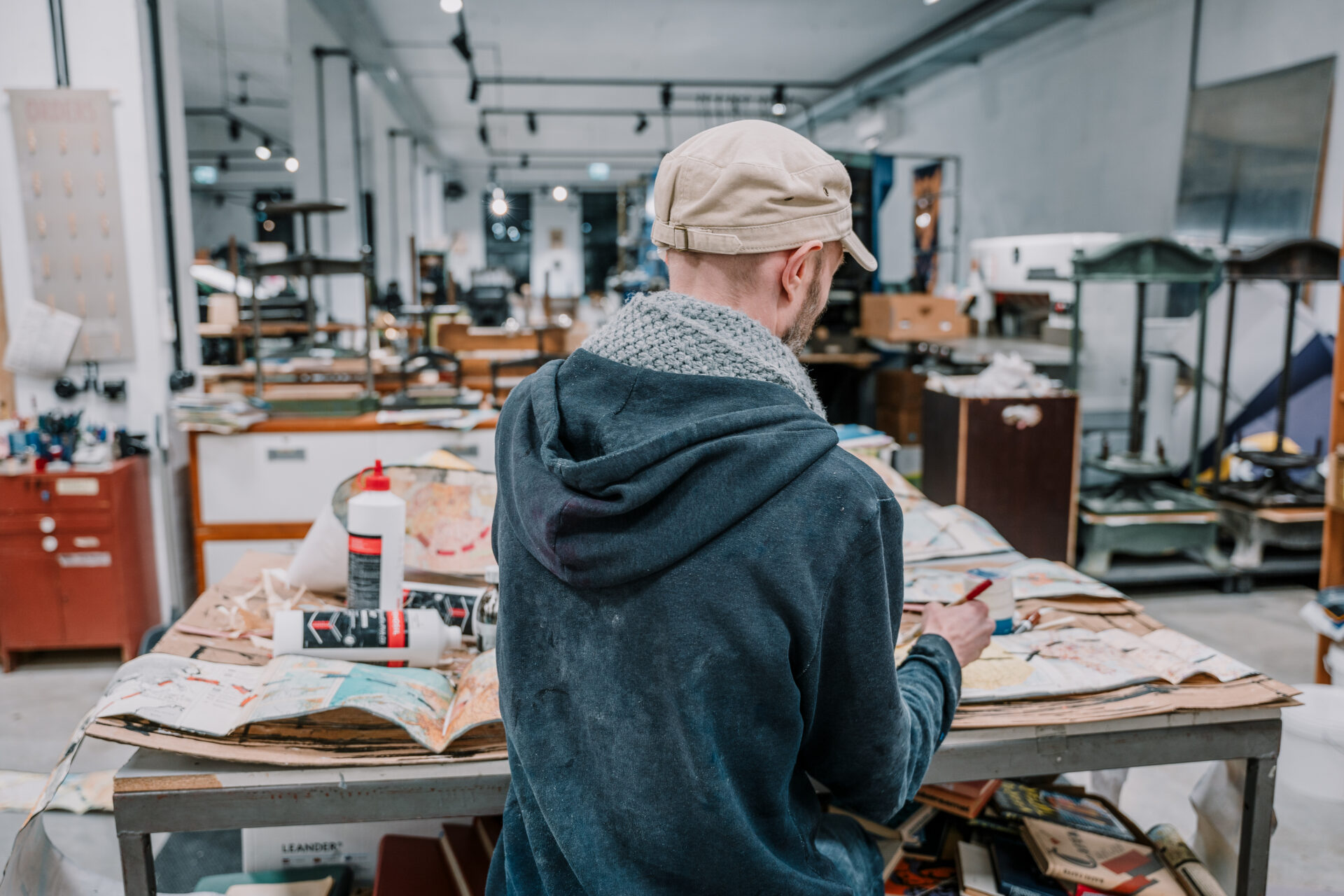
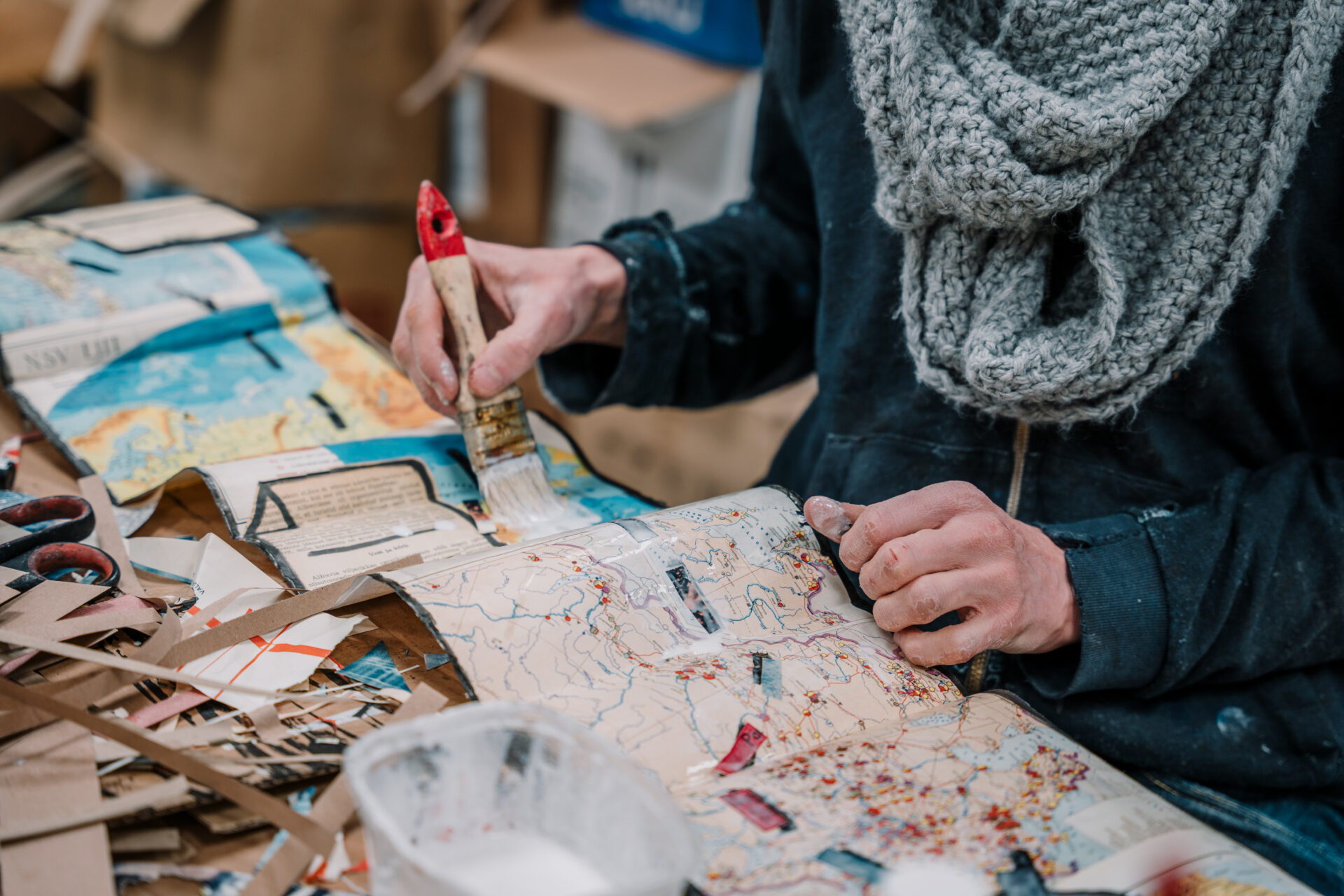
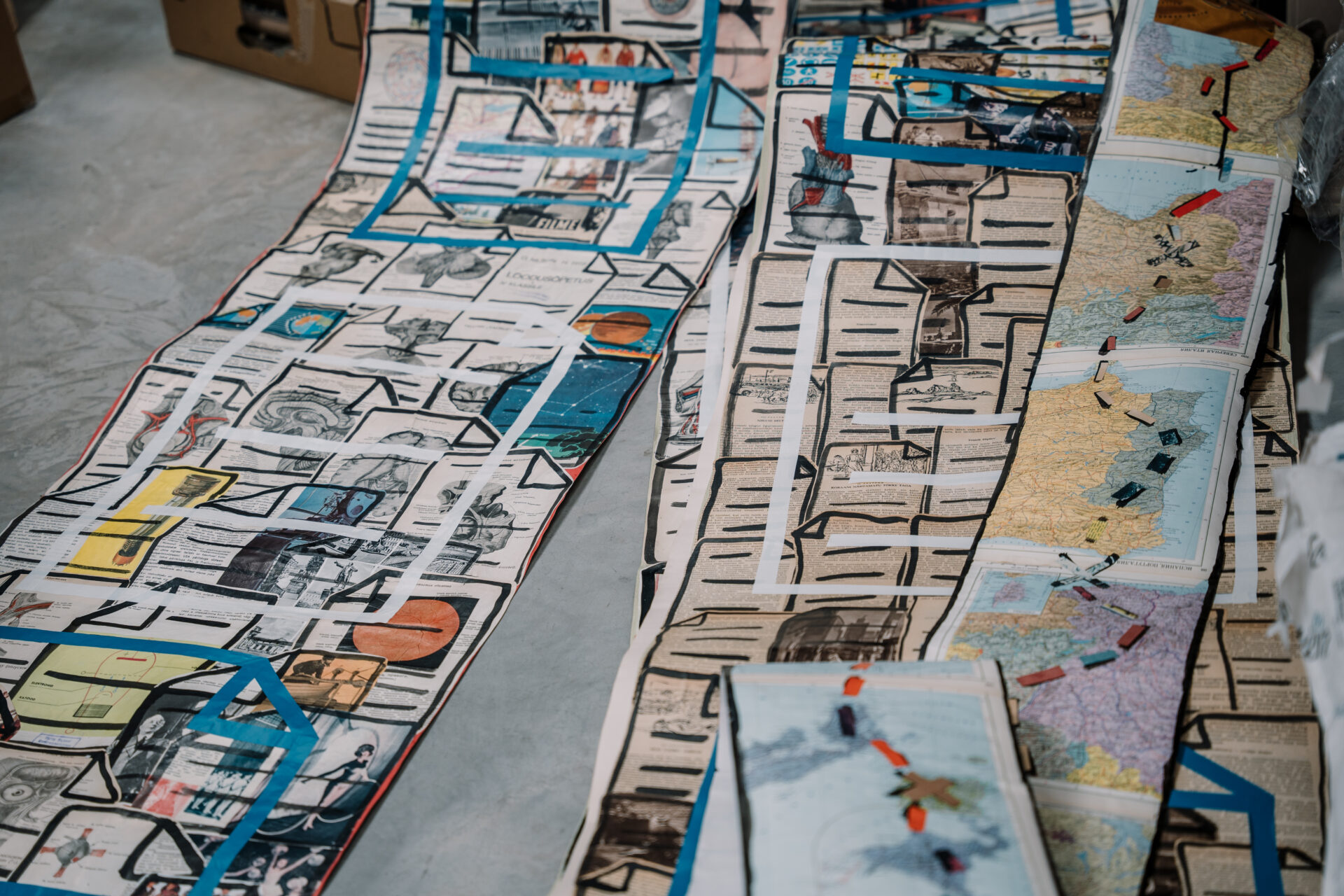
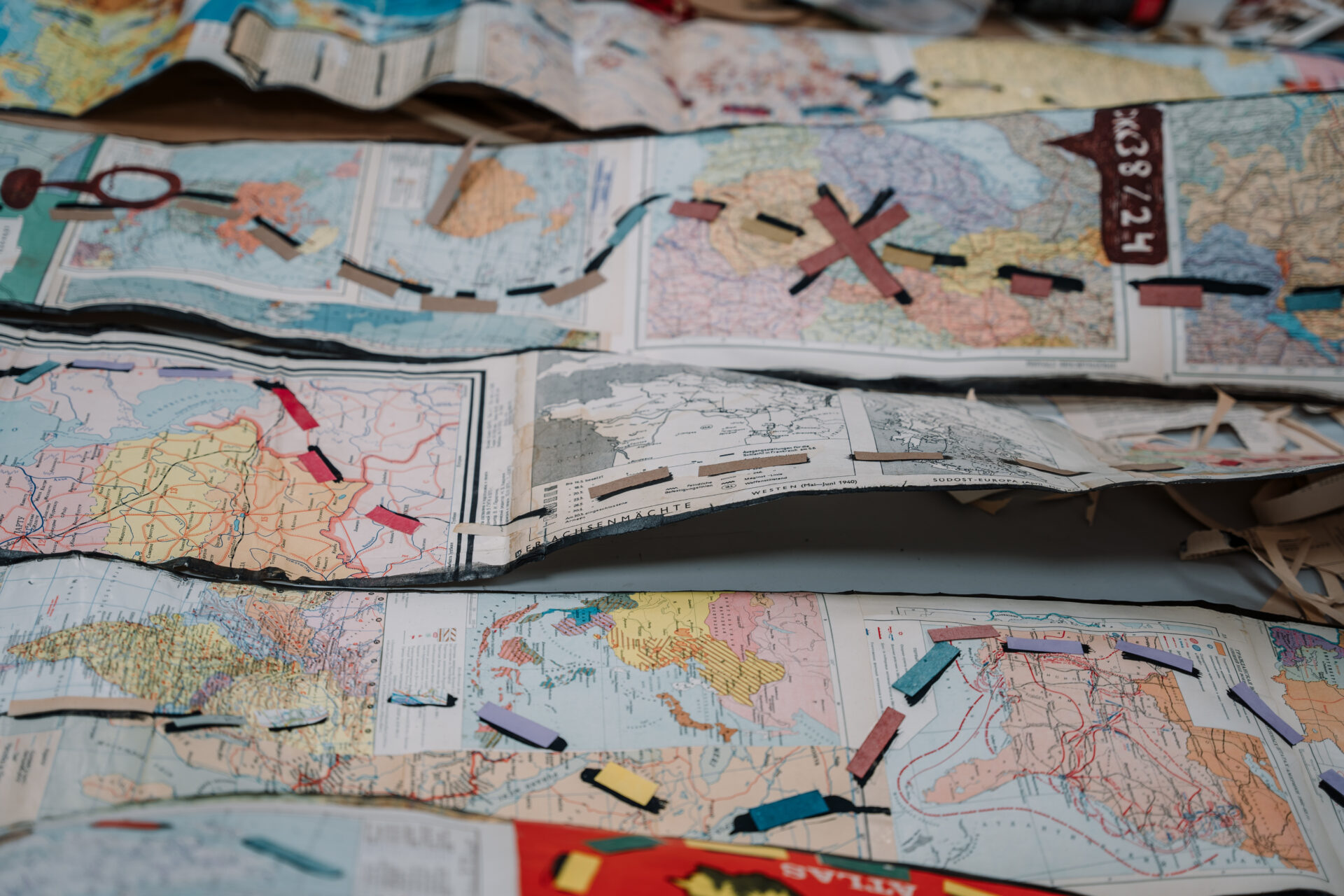
Residency was funded by Nordic-Baltic Mobility Programme for Culture).
